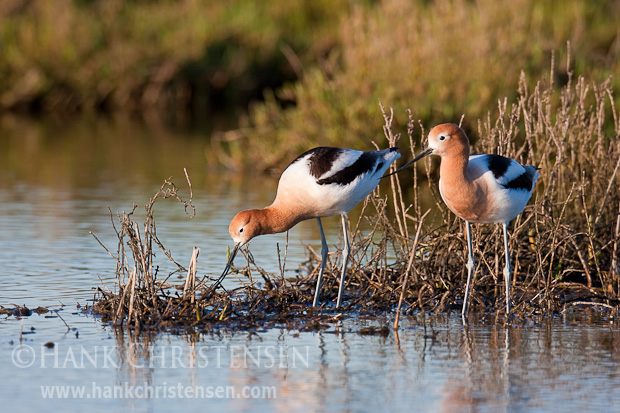
May you and your loved ones have a happy Valentine’s Day.
I’d like to wish my Valentine and beautiful wife of 7 years, Kerry, a very special day. Thank you for all of your love and support in everything that I do! I love you.

May you and your loved ones have a happy Valentine’s Day.
I’d like to wish my Valentine and beautiful wife of 7 years, Kerry, a very special day. Thank you for all of your love and support in everything that I do! I love you.
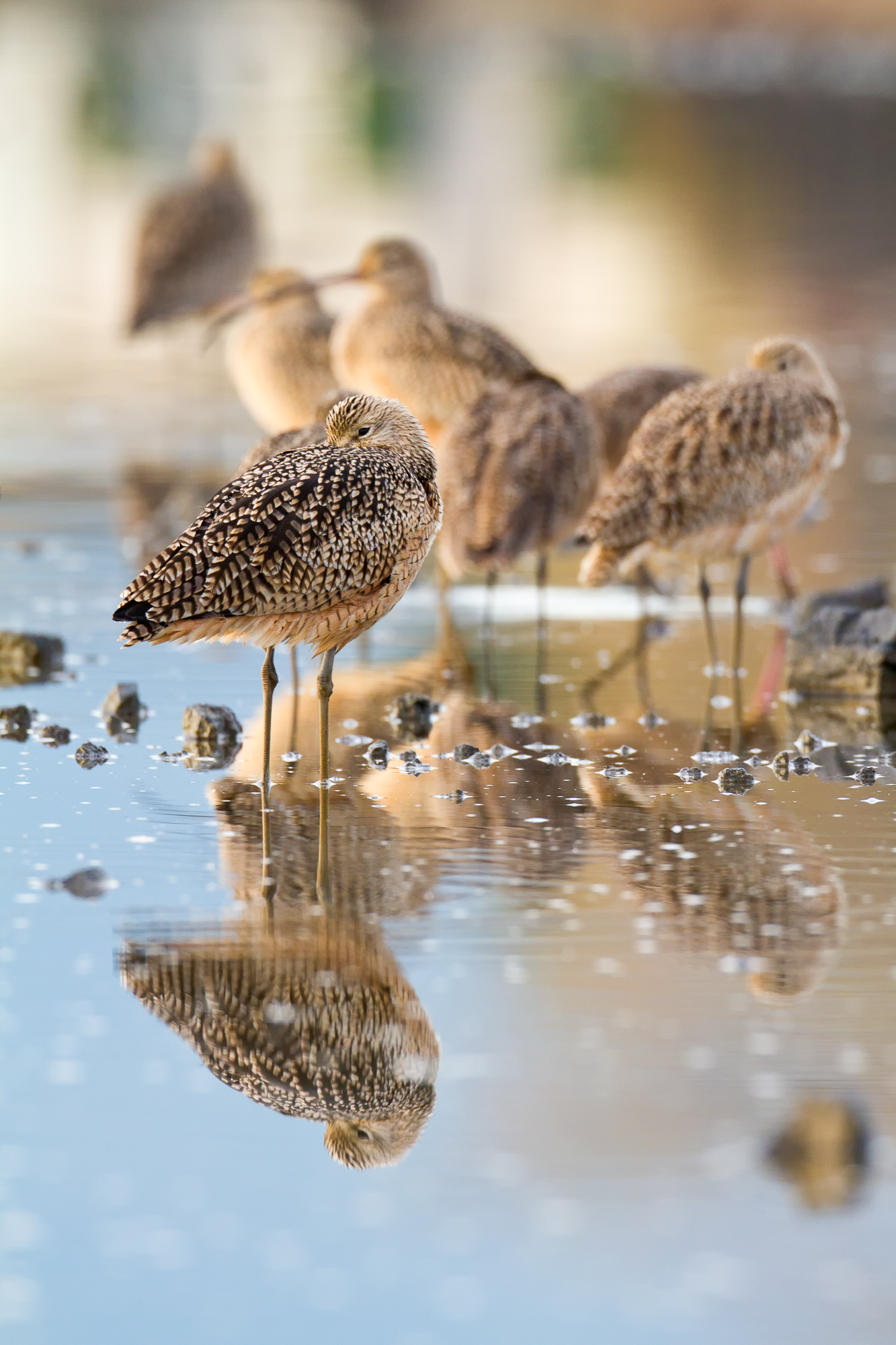
Every once in a while a photo comes along that I love, but seems to break many of my own guidelines that I usually follow. Many times when I’m out shooting wildlife or birds, I’ll take a few photos of the surrounding area, or try to include some habitat, to help me remember where I was and what the conditions were like. This is especially important when I’m making bird portraits. If my goal is a simple, clean background, it can be easy to forget what the surrounding area was like when I only see a bird’s head and shoulders in the photo. The photo of the long-billed curlew above was one such “habitat” shot that I took recently.
As I was reviewing my photos, I found that I really liked this one, even though it wasn’t intended as a keeper. I also realized that it breaks some of the rules that I like to follow in my bird photography. I put myself in the role of photo critic, and came up with the following negative aspects of this image.
1. Cluttered background – In most wildlife photography, one goal in creating a successful photo is to simplify the shot as much as possible. Eliminate distracting elements and leave only those that help support the subject. In this photo, the background is busy and the water surface messy.
2. Depth of field issues – The curlews in the background are out of focus. Are they part of the subject of the image? It is not clear from the focus alone. They are too blurry to be successful subjects, but not abstract enough shapes to blend well into the background.
So then, given the above criticisms, why do I like the photo so much?
1. Color – I absolutely love the color in this photograph. I like the pastel blues and tans, and the black in the first curlew’s feather pattern really pops.
2. Wildness – Sometimes the simple portrait with a pure single color background can get old. Even though they can be elegant, sometimes they lack the wild and wooliness of the real natural world. This photo serves up enough chaos to do justice to all the birds eating and preening in a bunch that morning.
3. Leading lines – The photo leads the viewers eye well through the frame and into the distance. Starting naturally at the bird on the left in sharp focus, the eye is attracted to the sleeping bird to the far right of the frame, because of the repeated shape of the first bird. Then the eye draws up and left along the line of birds, finally resting on the bird in the upper left of the photo, which is the farthest distinguishable object from the camera.
It is important to choose your best images in order to edit your collection of photos. Beyond that however, it is important to understand why you chose those photos. Doing so will help you to make better informed decisions about future photos, instead of just going with your gut. Next time you say to yourself, “I really like this one,” or “this one doesn’t work for me,” dig a little deeper and list out what you like or don’t like about a photo. What you come up with when your really think about it might surprise you.
So what do you think? A nice break from the norm, or not your cup of tea? Love it or hate it, I’d love to hear your opinion in the comments below.
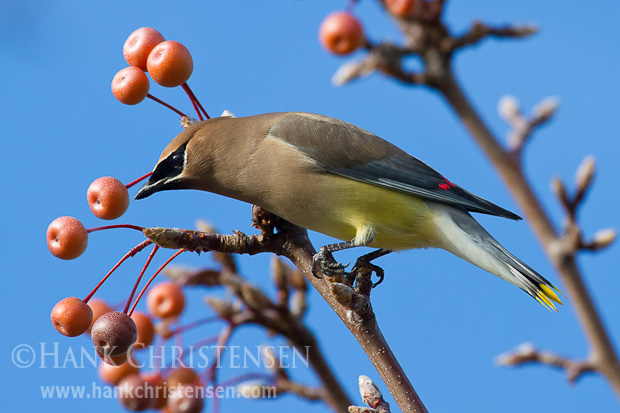
This weeks photo features the Cedar Waxwing, one of my favorite passerine species. I love the way this bird’s feather colors blend together into soft gradients, giving the appearance of a painting. Waxwings derive their name from bright red feathers near the tips of their wings, which is thought to resemble sealing wax. Cedar Waxwings travel in flocks and almost always perch off the ground, usually in trees, and rarely in bushes or shrubs.
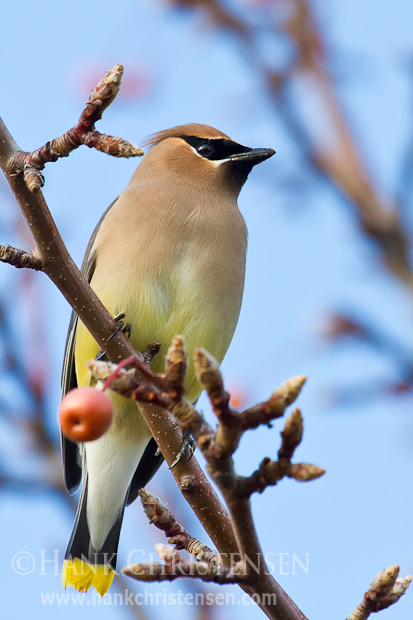
The waxwings seen here descended on a row of cherry trees, and proceeded to eat with great gusto for about an hour, moving from tree to tree. All shots were taken hand-held with my 100-400mm zoom lens. This is a great walk-around lens, which I use on hikes if I’m expecting the possibility of seeing wildlife.
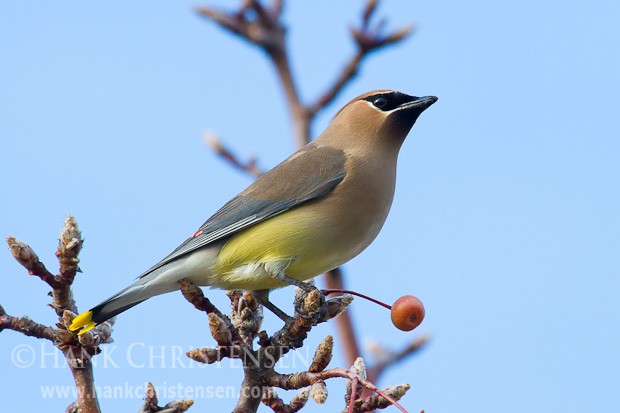
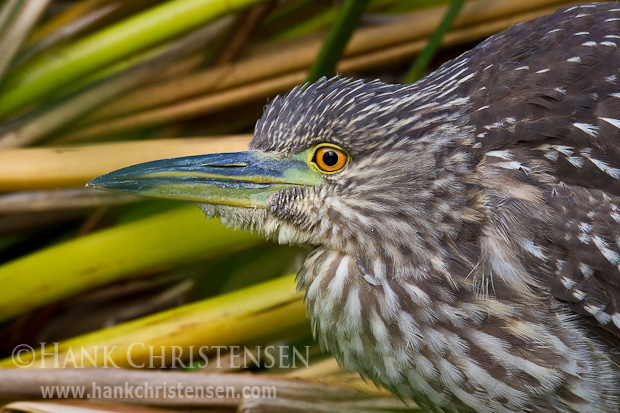
I little while ago I found myself in a situation in which I could not have gotten the shot I wanted had I been using film. After being tipped off by a friend, I found this nice looking juvenile black-crowned night heron in some reeds next to a pond. The shoreline was such that in order to get the proper frontal lighting on the heron, with a small angle of inclination between the lens view and the ground, I had to be right up close to him. Luckily, he seemed in no hurry to move, nor did he seem to care about my presence. While this distance was great for making tight head shots like the photo above, there was no way I could “back up” and capture any habitat around the bird.
Then I started thinking digitally. I knew that if I was careful in my photographing, I could take multiple photos and stitch them together later, creating the illusion of a wider angle. An added benefit would be a huge image file, which I could later print at very large sizes if I wanted to.
The process of taking the photos was very similar to the process I use for creating stitched panoramas – set the camera to manual exposure, fix the focus so that it is constant for all images, and fire away. The difference was that instead of moving left to right in a single line, my goal was for an aspect ratio close to a normal 35 mm photograph (2:3). In this case, I created two columns of three photos. I didn’t worry about lining up the overlap perfectly – I just eyeballed it.
Note that this only worked because my subject was completely stationary. If the heron was moving at all, the photos would not have lined up well and the stitched image wouldn’t have been successful. It probably took between five to ten seconds to capture all six shots, which I then stitched in Photoshop, creating the 50 megapixel image below.
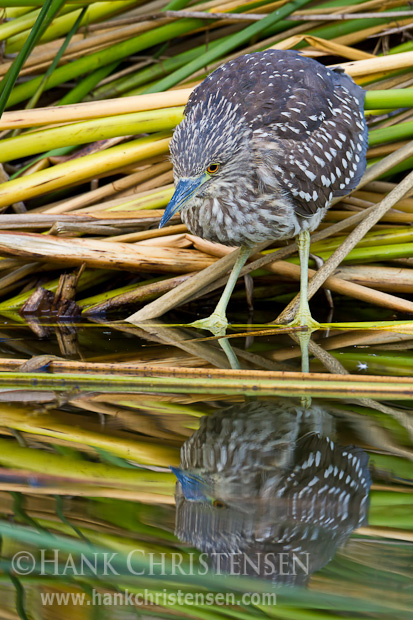
Even though I found myself in a position where I was “too close” (don’t worry, I’m not complaining – its a GREAT problem to have!), I was able to think digitally to solve my problem. By combining multiple shots, I was able to virtually “back up” and capture a wider shot of the heron.